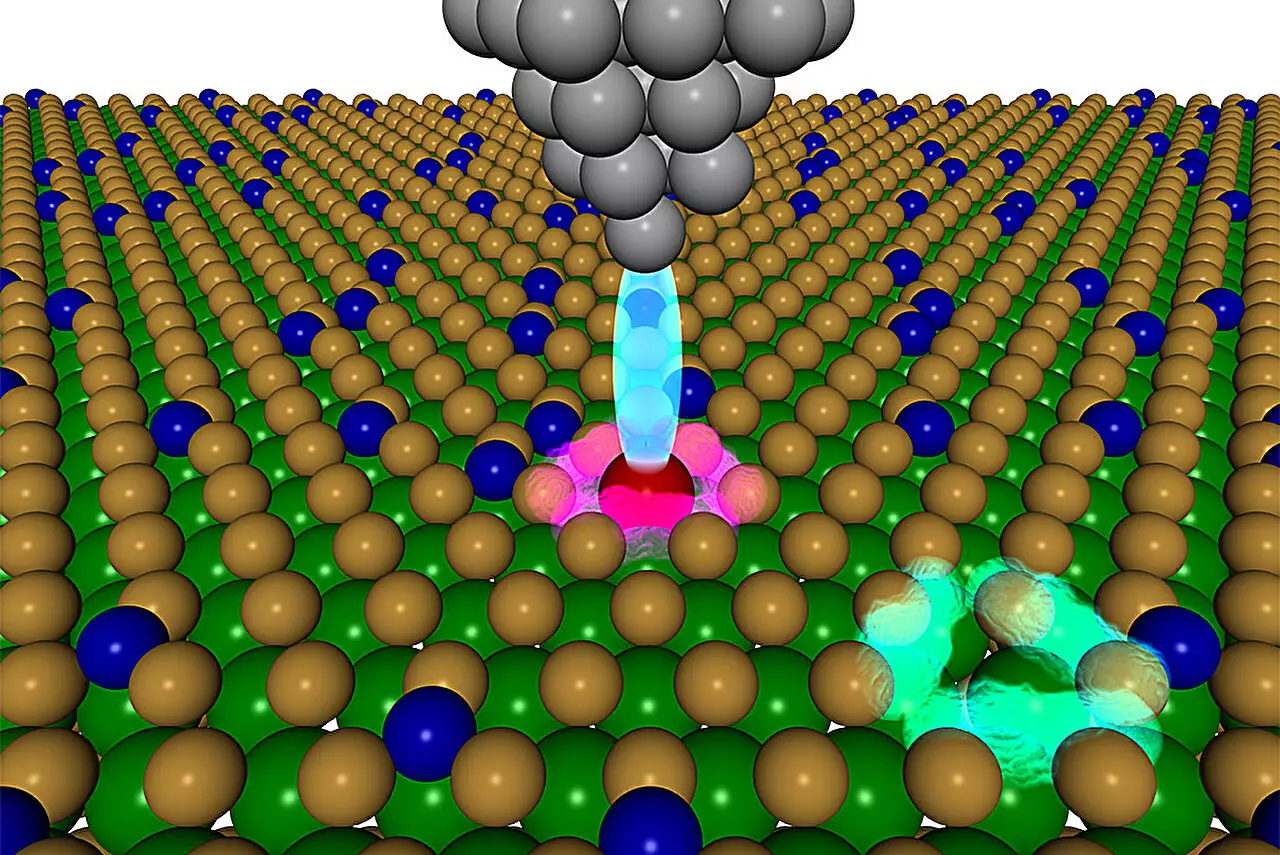The ongoing quest for groundbreaking materials in quantum applications has gained considerable momentum, thanks to a collaborative effort involving researchers from the Department of Energy’s Lawrence Berkeley National Laboratory (Berkeley Lab) and several esteemed institutions. In a study published in *Nature Communications*, these researchers unveiled an innovative methodology that promises to transform how we identify and develop quantum materials. The implications of this research extend far beyond academic interest; they touch on the potential for acceleration in computing, telecommunications, and various sensor technologies.
The pioneering study primarily leverages the fusion of rapid computational power with precise material fabrication techniques. The dual approach allows scientists to sift through hundreds of material candidates effectively, ultimately honing in on a shortlist of promising quantum materials. This methodology signifies a momentous shift from traditional discovery processes, which have often been laboriously slow and reliant on trial-and-error.
A Shift in Strategy: Theoretical Foundations and Experimental Validation
Central to the research is the reimagined strategy of employing theoretical computations to guide experimental practices. In essence, this method flips the conventional approach, allowing scientists to start with abstract theoretical models before moving towards tangible material creation. Alex Weber-Bargioni, one of the principal investigators, emphasizes this paradigm shift, stating that integrating theoretical screening with atomic-scale fabrication could expedite our journey toward discovering quantum materials tailored for specific applications.
This foundational change primarily targets the incorporation of defects into two-dimensional (2D) materials—a particularly compelling area in quantum science. Defects, defined as alterations in the atomic structure of materials, can present unique electronic properties essential for quantum functionality. However, identifying defects with desirable traits has typically been a serendipitous exercise in frustration. The situation is further complicated by the vast array of potential combinations involving various elements and their atomic locations. As Geoffroy Hautier points out, the infinite possibilities can be daunting for researchers; thus, a more streamlined method for identifying functional defects is invaluable.
The High-Throughput Computational Advantage
In pursuit of this streamlined process, the research team employed cutting-edge, high-throughput computational techniques. The groundbreaking work involved screening more than 750 potential defects in tungsten disulfide (WS2), leading to the identification of a specific defect created by substituting a sulfur atom with a cobalt atom. This approach significantly narrows down the number of candidates that experimentalists must tackle, paving the way for more concentrated and efficient research efforts.
The sheer scale of calculations performed by the team, grounded in quantum mechanics principles, relied heavily on the advanced computing capabilities provided by the National Energy Research Scientific Computing Center (NERSC) at Berkeley Lab. This aspect alone highlights a crucial advantage in modern scientific research: the symbiosis between computational power and experimental inquiry.
Turning Theory into Reality: Methodical Fabrication
Once promising defects were identified via theoretical models, the next critical step revolved around actualizing these findings through meticulous fabrication methods. The researchers, operating in Berkeley Lab’s Molecular Foundry, crafted a technique that allowed for atomic precision in the placement of defects. Utilizing tools such as a scanning tunneling microscope, they successfully embedded cobalt atoms into predetermined sites on a 2D WS2 substrate, an achievement akin to assembling a delicate puzzle of atoms.
John Thomas, a postdoctoral researcher at Berkeley Lab, eloquently describes this process, likening the manipulation of atoms to playing with LEGO bricks. This level of control is vital for facilitating interactions among defects—a necessity for their application in quantum entanglement scenarios, such as transmitting information via light through fiber-optic cables.
A Collaborative Revolution in Material Science
What truly differentiates this study is not merely the technical advancements but the enhanced synergy between theory and practice fostered among the researchers. This collaborative spirit was instrumental in ensuring that both theoretical and experimental routes were continuously aligned and optimized. The idea of fostering consistent feedback loops and collective brainstorming sessions may hold the key to unlocking further potential within the field of quantum materials.
With the creation of a publicly accessible database named the Quantum Defect Genome, the researchers are taking significant steps to democratize their findings, inviting global contributions and expanding the knowledge base of functional defects. This initiative reflects a broader trend in science towards an open, collaborative future where collective discovery can lead to accelerated innovations.
As the team plans to continue measuring the properties of newly crafted defects and exploring possibilities for shielding delicate quantum states from environmental disturbances, it becomes increasingly clear that the future of quantum materials research will thrive on a foundation of interdisciplinary cooperation and technological integration. Driven by deep theoretical insights and rigorous experimental validation, the potential for discovering entirely new functionalities is not just hopeful; it is imminent. Thus, as we stand on the cusp of this quantum revolution, the excitement is not just for what we will find but for how we will get there—making the path as significant as the destination.

